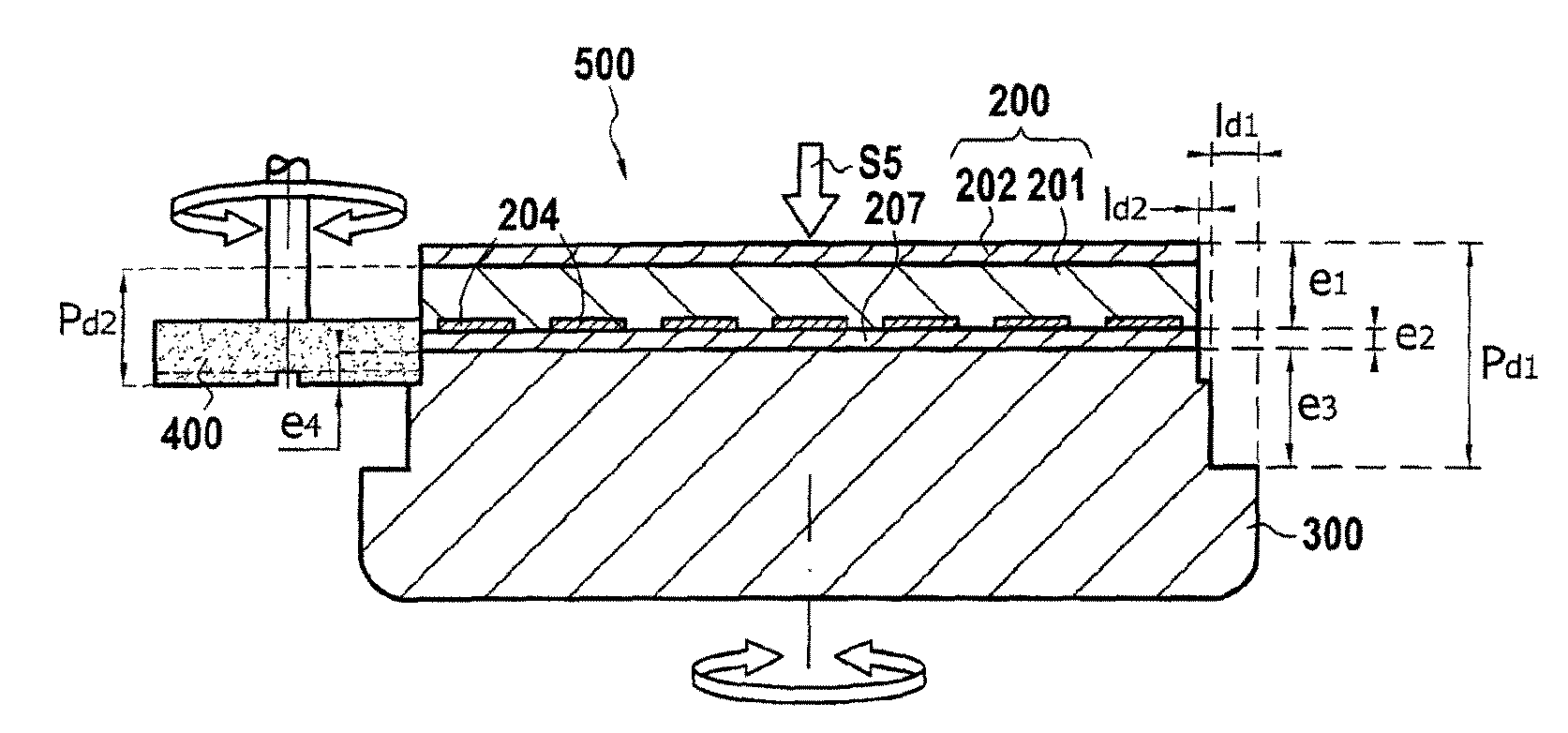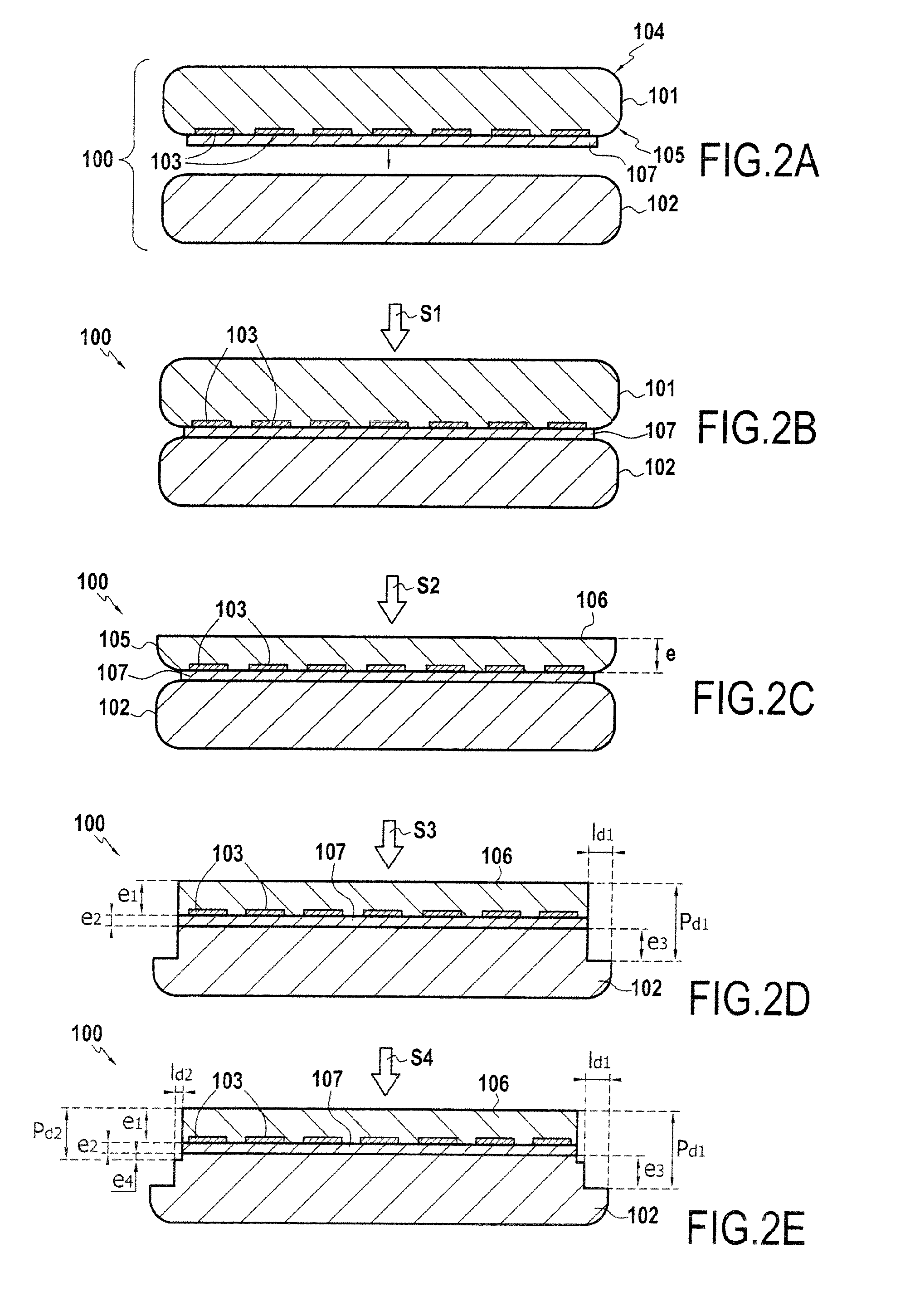Progressive trimming method
a cutting method and progress technology, applied in the direction of grinding machines, grinding/polishing apparatus, manufacturing tools, etc., can solve the problems of limited heat and/or stress during the second trimming step, and achieve the effect of minimizing the risk of delamination
- Summary
- Abstract
- Description
- Claims
- Application Information
AI Technical Summary
Benefits of technology
Problems solved by technology
Method used
Image
Examples
Embodiment Construction
[0027]The present invention is of general application to trimming a structure comprising at least two wafers assembled together by molecular bonding or any other type of bonding such as anodic bonding, metallic bonding, or bonding with adhesive, it being possible for components to be formed beforehand in the first wafer that is then bonded to the second wafer that constitutes a support. The wafers are generally of circular outline, possibly with different diameters, in particular diameters of 100 millimeters (mm), 200 mm, or 300 mm. The term “components” as used here means any type of element produced with materials that differ from the material of the wafer and that are sensitive to the high temperatures normally used to reinforce the bonding interface. These components correspond in particular to elements forming all or a portion of an electronic component or a plurality of electronic microcomponents, such as circuits or contacts or active layers that may be damaged or even destro...
PUM
| Property | Measurement | Unit |
|---|---|---|
| thickness | aaaaa | aaaaa |
| thickness | aaaaa | aaaaa |
| diameter | aaaaa | aaaaa |
Abstract
Description
Claims
Application Information
 Login to View More
Login to View More - R&D
- Intellectual Property
- Life Sciences
- Materials
- Tech Scout
- Unparalleled Data Quality
- Higher Quality Content
- 60% Fewer Hallucinations
Browse by: Latest US Patents, China's latest patents, Technical Efficacy Thesaurus, Application Domain, Technology Topic, Popular Technical Reports.
© 2025 PatSnap. All rights reserved.Legal|Privacy policy|Modern Slavery Act Transparency Statement|Sitemap|About US| Contact US: help@patsnap.com



